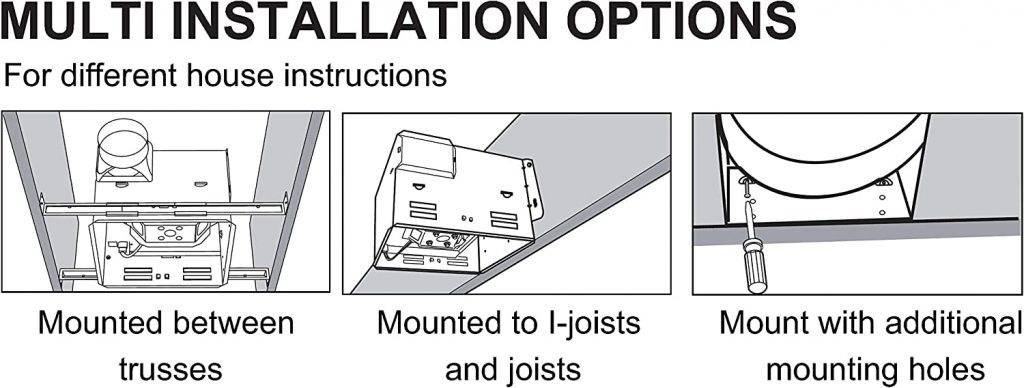How Do I Install a Quiet Exhaust Fan For Bathroom?

There are a few things to consider when installing a bathroom exhaust fan. The ducting should be positioned properly and the electrical wire should extend at least 7 inches into the housing. Once this is completed, you should attach flexible ducting to the vent and the fan. Some fans will include mechanical fasteners to make installation even easier.
Sound Levels
Bathroom exhaust fans can be noisy. It is possible to hear them from the hallway, and they can even be audible in adjoining rooms. That’s why manufacturers have rated them in sones, a system that measures the perceived loudness of sounds. While sones are not physical measurements like decibels, they do provide an important guide to the sound produced by a bathroom exhaust fan. In general, a bathroom exhaust fan that produces a noise level of 1.0 sones or lower is considered quiet.
Bathroom exhaust fans are designed to reduce moisture and noise. But the noise they produce can be annoying to people who live in the building. Therefore, it’s important to find a quiet one. A quiet bathroom exhaust fan should be 0.3 to 0.9 sones.
Ducting
If you’re wondering how to install a bathroom exhaust fan, there are several steps you can take to ensure that your new fan will be quiet. The first step is to choose the proper mounting location for your new bathroom fan. Make sure it’s on the outside of the bathroom wall or roof. You’ll also need to make sure the pipe is straight and not stretched too far.
Next, you’ll need to connect the flexible duct to the damper assembly. Be sure to align it according to the manufacturer’s instructions. Then, attach the damper to the housing using the provided fasteners.
Cost
Hiring a handyperson to install a bathroom ventilation fan is a low-cost option compared to hiring a general contractor. The average cost is $40 to $130, and the labor time is typically under an hour. However, if you want to avoid possible damage or mishaps, it is best to hire a licensed, bonded, and insured contractor. In addition, you should check with your local building inspector’s office if you need a building permit, which can add another $20 to $100 to your project. The cost of installing a bathroom ventilation fan will depend on the size and type of the unit and the labor required.
Another option is installing a unit in an attic. Depending on the size, these units can cost anywhere from $100 to $200. They are larger than traditional bathroom exhaust fans and can help vent more than one bathroom. However, they can be more expensive to install. In addition, these models may require an extra electrical outlet and can be installed closer to the window.
Installation
To install a new quiet exhaust fan for the bathroom, follow the manufacturer’s installation instructions. The unit should be mounted in a vertical position, with the intake port pointing upwards. Then, hardwire the unit using bare and green wires. Attach the fan grille to the housing, following the manufacturer’s instructions. Once the fan is installed, test it by turning on the switch.
Before installing a bathroom exhaust fan, make sure the location is safe. It should be close to the shower and have a direct route to the outside. In some cases, homeowners may have to cut a hole in the roof or attic to install the fan. Next, screw the fan into the joists.
About the Author

I am a writer who does research on the bathroom and researches whether minimalist or modern bathroom equipment and products. I will continue to write to make the time spent in the bathrooms enjoyable.
